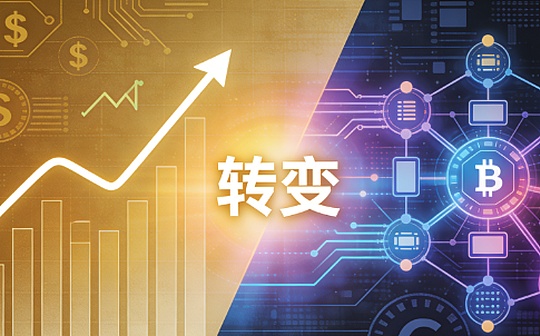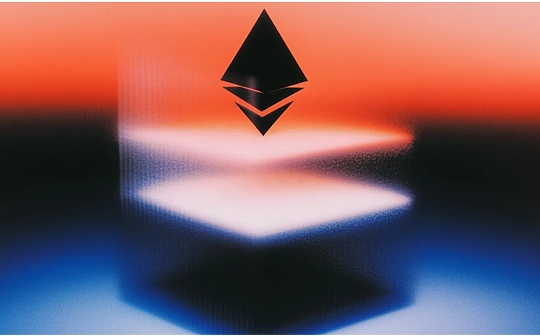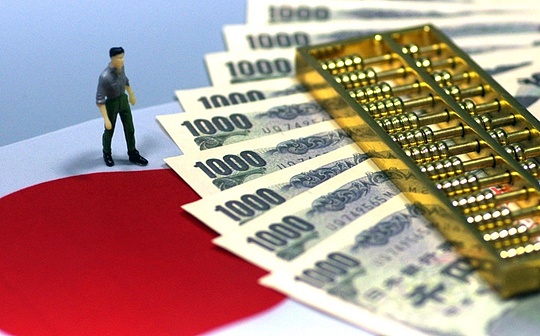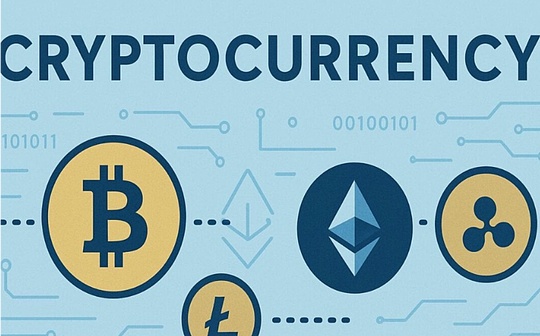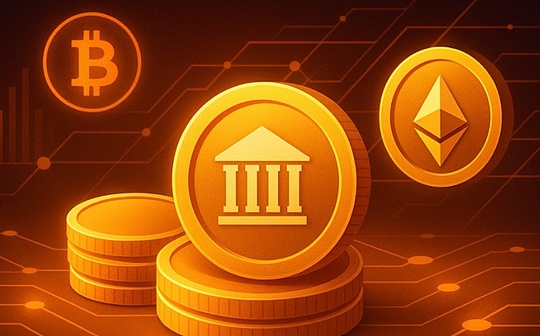
source:Arthur Hayes, founder of BitMEX; compiled by: AIMan@Bitchain Vision
U.S. Treasury Secretary Scott Bessent deserves a new nickname.I named him BBC, the abbreviation of Big Bessent Cock.Yes, his devastating “Tinding” is destroying the status quo of the global financial ecosystem, but this nickname does not fully reflect his characteristics.I believe himA more appropriate name is needed to describe the pain he will bring to two very important components of the fiat currency (fugazi) financial system: the Euro dollar banking system and the foreign central bank.
Like the serial killer in the movie Silence of the Lambs (this is definitely a fucking classic worthy of the “Netflix and Chill” night for any unearthed youngster), Scott “Buffalo Bill” Becent is about to wipe out the Euro dollar banking system and take control of foreign non-dollar deposits.Just as slaves and well-trained legions maintained “peace under Roman rule” (Pax Romana), slaves and dollar hegemony maintained “peace under American rule” (Pax Americana).The slavery aspect of “peace under the rule of the United States” is not just about the historical transport of Africans to pick cotton; the modern whip is “monthly payment”, and generations of young people are willing to bear the debts that crush their lives to obtain worthless certificates, hoping that they can also work at Goldman Sachs, Sullivan & Cromwell or McKinsey.This is a broader, more sinister, and ultimately more effective means of control.Unfortunately, now that the United States has artificial intelligence (AI), these debtors are about to lose their jobs… Put on blue-collar workwear, man.
I’m getting far from it.
This article will discuss the control of the global reserve currency, the US dollar, by “peace under the United States”.All previous U.S. Treasury Secretary have wielded the stick of the dollar to varying degrees.The most significant failure is allowing the emergence of the Euro dollar system.
The Euro dollar system emerged in the 1950s and 1960s, aiming to circumvent US capital controls (such as the Q Regulations), avoid economic sanctions (the Soviet Union needed local deposits of its dollars), and provide banking services to non-U.S. trade flows during the global economic recovery after World War II.The monetary authorities at the time could have recognized the need to supply US dollars to foreigners and allowed the U.S. domestic monetary center banks to take control of the business, but domestic political and economic concerns required a tough stance.As a result, the Euro dollar system developed to an unknown scale in the following decades and became a force that cannot be ignored.An estimated $10 to $13 trillion in Euro dollars flows among various non-U.S. banks.These capital ebbs and flows have led to various financial crises in the post-World War II era, and these crises always require printing of money to resolve.A paper entitled Offshore Dollar and U.S. Policy written by the Atlanta Fed in August 2024 discusses this phenomenon.
For Becente, there are two problems with the Euro dollar system.The first question is that he simply has no idea how many Euro dollars exist and why these dollars are financing.The second problem, and most importantly, is that these Euro dollar deposits were not used to buy his junk government bonds.Is there any way to solve these two problems?Please remember this first, and I will quickly talk about foreign currency holdings of non-US retail depositors.
De-dollarization is real.It really started in 2008, when the U.S. currency lords decided not to let banks and financial institutions go bankrupt due to their bad bets, but to bail them by launching unlimited quantitative easing (QE Infinity).A useful indicator of the response of global central banks holding trillions of dollars in assets is the percentage of gold in their reserves.The higher the percentage of gold in a person’s reserves, the less trust the U.S. government.
 As seen in the picture above,After 2008, the percentage of gold in central bank reserves bottomed out and began to rise for a long time.
As seen in the picture above,After 2008, the percentage of gold in central bank reserves bottomed out and began to rise for a long time.
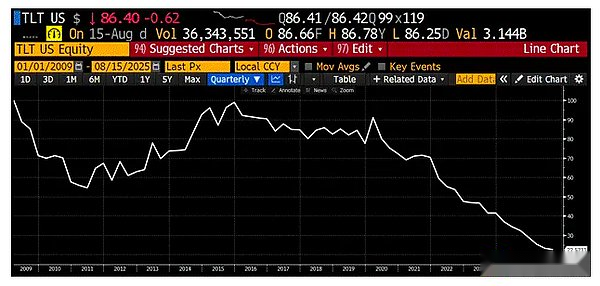
This is the TLT US ETF, which tracks the trend after a 20-year or more long term US Treasury bond divided by the price of gold.I’ve set its index to 100 since 2009.Since 2009, Treasury bonds have depreciated by nearly 80% compared to gold.The U.S. government’s monetary policy is to bail out its banking system while harming foreign and domestic debt holders.No wonder foreign central banks began to follow Scrooge McDuck (a cartoon character who hoarded gold).U.S. President Trump intends to follow a similar strategy, but besides cheating on bondholders, he believes that tariffs can tax foreign capital and trade flows, thus making the United States great again.
Becente really can’t do much to convince the central bank’s reserve manager to buy more Treasury bonds.However, from the perspective of the US dollar, there is a huge, under-banked group in the Global South, and what they most desire is to have a positive return dollar currency account.As you know, all fiat currencies are junk compared to Bitcoin and gold.That being said, if you are in the fiat currency system, the best fiat currency is the US dollar.Domestic regulators that dominate most of the world’s population force their civilians to hold bad-quality currencies plagued by high inflation and limit their access to the dollar financial system.These civilians would buy T-bills at any rate of return offered by Becente just to escape their bad government bond market.Is there any way for Besent to provide banking services to these people?
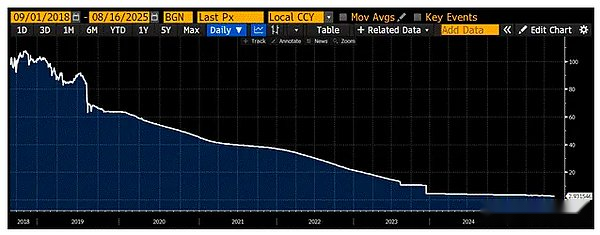
I first went to Argentina in 2018 and will go regularly after that.This is a chart where ARSUSD has been indexed to 100 since September 2018.Argentine peso depreciates 97% against the dollar in seven years.Currently, when I go there to ski, all my service staff fees are paid in USDT.
Becente discovered a new tool that could solve his problem.It is called a stablecoin.The stablecoin pegged to the dollar is now boosted by the U.S. Treasury Department.The Empire will support selected issuers as they sucked away Euro dollar and retail deposits from the global South.To understand why, I will quickly introduce the structure of a “acceptable” stablecoin pegged to the dollar.Then, I will talk about the impact on the traditional finance (TradFi) banking system.Finally, this is also the purpose of you degenerate (degenerate, currency circle term, referring to high-risk investors) coming here. I will explain whyGlobal adoption of the US dollar stablecoins supported by “peace under the US” will drive long-term use growth of DeFi applications, especially Ethena, Ether.fi and Hyperliquid..
As you know, Maelstrom (the author’s institution) is not done for free.We hold a large number of positions, large numbers of positions.
If you don’t know enough about stablecoins, I’ll preview a new stablecoin infrastructure project we’re consulting – Codex – I believe it will be the best performing token from the upcoming token generation event (TGE) until the end of this cycle.
What are acceptable stablecoins?
A stablecoin pegged to the US dollar is similar to a narrow bank.Stablecoin issuers accept USD and invest these USDs in risk-free debt instruments.The only nominal risk-free debt instrument of the US dollar is Treasury bonds.Specifically, because issuers must be able to provide physical dollars on demand when the holder redeems, stablecoin issuers will invest only in short-term T-bills.The maturity of short-term Treasury bonds is less than one year.Because it has little or no duration risk, its transactions are like cash.
Let’s take a look at the process.
To create a unit of stablecoin, I take Tether USD (code: USDT) as an example:
1. Authorize participants (APs) to wire the US dollar to Tether’s bank account.
2. Tether creates 1 USDT for every $1 deposit.
3. In order to earn US dollar income, Tether buys Treasury bonds.
If the AP wires $1,000,000, they will receive 1,000,000 USDT.
Tether buys $1,000,000 worth of Treasury bonds.
USDT does not pay interest.
but
The interest rate paid by Treasury bonds is basically the Federal Funds rate, which is currently 4.25% to 4.50%
Tether’s net interest margin (NIM) ranges from 4.25% to 4.50%.
To absorb deposits, Tether or affiliated financial institutions (such as cryptocurrency exchanges) will pay a portion of the net interest margin when depositors stake their USDT.Staking just means you lock USDT for a while.
Redeem a unit of stablecoins:
1. AP sends USDT to Tether’s encrypted wallet
2. Tether sells Treasury bonds equivalent to USDT USD.
3. Tether sends $1 per 1 USDT to the AP’s bank account.
4. Tether destroys USDT and removes it from circulation.
Tether’s business model is very simple.Receive US dollars, issue digital tokens running on the public chain, invest US dollars in treasury bonds, and earn net interest margin.Becente will ensure that the Imperially acquiesced to support issuers can only deposit US dollars in a licensed bank of the United States and/or hold Treasury bonds.Don’t make any fancy things.
Impact on Euro Dollar
Before the stablecoins emerged, when Euro dollar banking institutions were in trouble, the Federal Reserve and the U.S. Treasury always took the bailout.A well-functioning Euro dollar market is crucial to the health of the empire.But now, there is a new tool that allows Becent to absorb these flows of money.At the macro level, Becente must provide a reason to transfer Euro dollar deposits to the chain (on-chain).
For example, during the 2008 global financial crisis, the Fed secretly provided billions of dollars in loans to foreign banks that were short of dollars due to the ripple-loan reaction of the collapse of subprime mortgages and their associated derivatives.As a result, Euro-dollar depositors believe that the U.S. government implicitly guarantees their funds, although technically, they are outside the U.S.-regulated financial system.Announcement that if a financial crisis occurs again, non-US bank branches will not receive any help from the Federal Reserve or the Treasury Department, which will redirect Euro dollar deposits to the arms of stablecoin issuers.If you think this is far-fetched, a strategist at Deutsche Bank wrote an article that openly questioned whether the United States would weaponize dollar swap lines to force Europeans to do what the Trump administration requires them to do.You better believe that Trump is most willing to castrate the Euro dollar market by effectively canceling its banking services.These institutions canceled banking services for his family after his first term; now is the time to pay back.Cause and effect.
Without guarantees, Euro dollar depositors will act in their best interests and transfer funds into stablecoins pegged to the dollar like USDT.Tether holds all its assets as U.S. Bank deposits and/or Treasury bonds.By law, the U.S. government guarantees all deposits from eight “too big to collapse” (TBTF) banks; after the 2023 regional banking crisis, the Federal Reserve and the Treasury effectively guarantee all deposits from any U.S. bank or branch.The risk of default on Treasury bonds is also zero, because the U.S. government will never voluntarily go bankrupt because it can always print money to repay Treasury bond holders.Therefore, stablecoin deposits are risk-free in the nominal US dollar, but now Euro dollar deposits are not.
soon,The stablecoin issuer pegged to the US dollar will face an inflow of $10 to $13 trillion and then purchase Treasury bonds.Stablecoin issuers become a big price-insensitive buyer of Becente’s dogshit paper!
Even if Fed Chairman Powell continues to hinder Trump’s monetary agenda by refusing to “cut interest rates, end quantitative tightening (QT) and restart quantitative easing (QE)”, Becente can issue Treasury bonds at rates below the federal funds rate.He can do this because a stablecoin issuer must buy whatever he sells at the rate of return he provides.Through a few steps, Becent gained control of the front end of the yield curve.It doesn’t make sense for the Fed to continue to exist.Perhaps a Benini-style “Percius and the Head of Medusa”-style statue of Benini will stand on a square in Washington, D.C. entitled “The Head of Benite and the Monster of Jekyll Island (i.e. the Federal Reserve).
Impact on the Global South
American social media companies will become Trojan horses, destroying foreign central banks’ ability to control their civilian money supply.In the global South, the penetration of Western social media platforms (Facebook, Instagram, WhatsApp and X) is comprehensive.
I spent half of my life in the Asia-Pacific region.Convert depositors’ local currency into USD or USD equivalents (such as Hong Kong dollars) so that capital can obtain USD returns and US stocks, forming a large part of the region’s investment banking business.
Local monetary authorities play gopher game against traditional financial institutions to close plans to allow capital outflows.The government needs the capital of civilians and to some extent segregate the capital of the wealthy who are non-politically related so that they can impose inflation taxes, support underperforming national champions, and provide low-interest loans to heavy industries.Even if Becente wants to use the U.S. large monetary center bank as a pioneer to provide banking services to these desperate people, local regulators prohibit this.But there is another more efficient way to obtain these capital.
Except for mainland China.Everyone uses a Western social media company.What if WhatsApp launches a crypto wallet to each user?Within the application, users can seamlessly send and receive approved stablecoins like USDT.With this WhatsApp stablecoin wallet, users can send money to any other wallet on various public blockchains.
Let’s use a fictional example to illustrate how WhatsApp offers digital dollar bank accounts to 1 billion members of the global South.
Fernando is a Filipino who runs a click farm in rural Philippines.Basically, he creates fake fans and fake impressions for social media celebrities.Because all of his clients are outside the Philippines, he finds collections difficult and expensive.WhatsApp became his main payment method as it provides a wallet that can send and receive USDT.His clients also have WhatsApp and they are more than happy to stop using bad banks.Both sides were happy with the arrangement, but it was to intermediate the local Philippine banking system.
After some time, the Central Bank of the Philippines noticed that a large proportion of the growing bank capital flows disappeared.They realize WhatsApp has spread the stablecoins pegged to the dollar throughout the economy.The central bank has actually lost control of the money supply.However, they can do nothing about it.The most effective way to stop Filipinos from using WhatsApp is to turn off the internet.Beyond that, even putting pressure on local Facebook executives (if any) wouldn’t help.Mark Zuckerberg ruled in a bunker in Hawaii.And he has received blessings from the Trump administration to launch stablecoin functions to Meta users worldwide.Any Internet law that is unfavorable to U.S. technology companies will lead to the Trump administration’s imposition of high tariffs.Trump has threatened the EU to raise tariffs unless they abandon “discriminatory” internet legislation.
Even if the Philippine government can remove WhatsApp from Android and iOS app stores, motivational users can easily bypass the blockade by using a VPN.Of course, any form of friction will curb the use of Internet platforms, but social media is basically an addictive drug.After more than a decade of continuous dopamine shock, civilians will find any workarounds to continue to destroy their brains.
Finally, Becente can wield his sanctioned weapon.Asian elites all hid their money in the US dollar in the center of offshore banking.They obviously do not want their wealth to be eroded by inflation through their monetary policies.Do what I said, not what I did.Suppose Philippine President Bongbong Marcos threatens Meta.Becente can fight back immediately, sanctioning him and his cronies, thereby freezing their billions of dollars of offshore wealth unless they succumb and allow stablecoins to spread within their homeland.His mother, Imelda, knew very well how long the arms of U.S. law were assaulted by the RICO charges that accused her and her late husband, former dictator Ferdinand Marcos of misappropriating Philippine government funds for real estate in New York City.I don’t think Marcos is eager for a second round.
If my argument is correct, andStablecoins are part of the monetary policy that U.S. hegemony seeks to expand the use of the dollar, then the Empire will protect the U.S. tech giants from retaliation from local regulators as they provide dollar banking services to civilians.And these governments can do nothing about it.Assuming I am right, what is the total potential market for potential stablecoin deposits from the global south?The most advanced group of countries in the world in the South is the BRICS.We exclude China because Western social media companies are ineffective against it.The question is what is the best estimate of local currency bank deposits.I asked Perplexity and its answer was $4 trillion.I know this may be controversial, but let’s add Euro-poor-eans to this group as well.I think the euro is dead garcon walking because the economic policy of Germany and then France will split the currency union.With the advent of capital controls, by the end of this century, the only purpose of the euro will be to pay for admission fees for Berghain, a well-known electronic music club in Berlin, Germany and the minimum spending for Shellona, a French beach club in the Caribbean.When we add $16.74 trillion in European bank deposits,Total amount is close to about $34 trillion for competition.
Either make it bigger or go home
Bescent has a choice: either become bigger or become a Democrat.Does he hope the Reds (Team Red, referring to the Republican Party) will win the 2026 midterm elections, most importantly, in the 2028 presidential election?I believe he was thinking, if so, the only way to win is to fund Trump so that he can provide more free stuff to civilians than Mamdanis and AOCs (referring to the radical left).So Becente needs to find a price-insensitive Treasury buyer.Obviously, given the public support for this technology, he believes that stablecoins are part of the solution.But he needs to do his best.
If the Euro dollar and the deposits of the global southern and European poor do not flow into stablecoins, he must use his star-studded “members” (referring to sanctions and other means) to deal with them (Bismark them).Either apply the dollar to the skin (referring to the dollarization), or you will be punished again.
The purchasing power of USD 10 to USD 13 trillion comes from the collapse of the Euro dollar system.
The purchasing power of $21 trillion in Treasury bonds comes from retail deposits from poor people around the world in the south and Europe.
Total = $34 trillion
Obviously, not all of this capital will flow into the hands of stablecoins pegged to the US dollar, but at least we have a huge total potential market (TAM).
The real question is how will the increase in stablecoin deposits of up to $34 trillion drive DeFi to new heights?If there is a credible argument that DeFi usage will increase, which shitcoins will soar?
Stablecoins flow to DeFi
The first concept that readers must understand is pledge.Let’s imagine that a portion of that $34 trillion now exists in the form of a stablecoin.For simplicity, we assume that Tether’s USDT received all the inflows.Tether must transfer some of its net interest margin to holders due to fierce competition from other issuers such as Circle and large TBTF banks.It does this by working with some exchanges where USDT pledged in related exchange wallets generates some interest in the form of newly minted USDT units.
Let’s look at a simple example.
Fernando from the Philippines has 1000 USDT.PDAX, a cryptocurrency exchange based in the Philippines, offers a 2% pledged USDT yield.PDAX creates a staking smart contract on Ethereum.Fernando staked by sending his 1000 USDT to a smart contract address, and then a few things happened: ·
1. His 1000 USDT became 1000 psUSDT (PDAX Staked USDT; PDAX’s liability).Initially, 1 USDT = 1 psUSDT, but every day psUSDT becomes more valuable than USDT due to accrued interest.For example, using an annual interest rate of 2% and ACT/365 monointerest accounting method, psUSDT gains about 0.00005 per day.One year later, 1 psUSDT = 1.02 USDT.·
2. Fernando received 1000 psUSDT to his exchange wallet.
Some powerful things just happened.Fernando locked his USDT at PDAX and received an interest-bearing asset in return.psUSDT is now available as collateral in the DeFi ecosystem.This means he can trade another cryptocurrency with it; he can borrow with it as collateral; he can trade derivatives on DEX using it as leverage, and so on.
What happens when Fernando wants to redeem his psUSDT as USDT a year later?
1. Fernando goes to the PDAX platform and unstakes (unstake) by sending 1000 psUSDT to his exchange wallet and/or connecting a third-party DeFi wallet (such as Metamask) to the PDAX dApp.
2. psUSDT was destroyed and he received 1020 USDT.
Where does the interest paid to Fernando’s extra 20 USDT come from?This comes from Tether’s collaboration with PDAX.Tether has a positive net interest margin, which is just the interest income earned from its Treasury portfolio.Tether then creates additional USDT with these dollars and sends a portion to PDAX to fulfill its contractual obligations.
Both USDT (base currency) and psUSDT (interest-generating currency) become acceptable collateral throughout the DeFi ecosystem.Therefore, a certain percentage of total stablecoin traffic will interact with DeFi dApps.Total lock value TVL measures this interaction.Whenever a user interacts with a DeFi dApp, they have to lock their capital for a while, which is represented by TVL.TVL is at the top of the funnel for trading volume or other revenue-generating behaviors.Therefore, TVL is a leading indicator of DeFi dApp’s future cash flow.
Before we look at how TVL affects the future benefits of several projects, I would like to explain the main assumptions in the upcoming financial model.
Model assumptions
I will soon propose three simple and powerful financial models for estimating the target prices of Ethena (Token: ENA), Ether.fi (Token: ETHFI), and Hyperliquid (Token: HYPE) by the end of 2028.I predict that by the end of 2028, because that is when Trump leaves office.My basic assumption is that Team Blue (Democrats) is slightly more likely to win the presidency than Team Red (Republican).That’s because Trump cannot successfully correct the injustice caused to his base voters in four years due to a half-century accumulation of monetary, economic and foreign policy.Rat poison on the cake is that no politician will fulfill all their campaign promises.Therefore, the turnout for ordinary Republican voters of the Red Team will decline.
The average Red Team will be indifferent to any Trump successor running for president and will not have enough numbers to vote to surpass those childless cat ladies with Trump’s insanity syndrome (TDS).TDS will haunt any member of the Blue Democratic Party ascends the throne, leading them to adopt a monetary policy of cutting off their nose to spit their faces just to prove they are different from Trump.But ultimately, no politician can resist the temptation to print money, and a stablecoin pegged to the dollar is one of the best price-insensitive buyers for short-term Treasury bonds.So they may not initially support the stablecoin wholeheartedly, but the new emperor will find that without this capital they are actually naked and eventually continue the policies I mentioned earlier.This policy swing will pierce the crypto bubble and lead to an epic bear market.
Finally, the numbers mentioned in my model are huge.This is a once-in-a-century change in the global monetary structure.Most of us, unless we inject stem cells intravenously for the rest of our lives… maybe, we will never witness such an event again in our investment career.My forecast of upside potential will be greater than SBF’s (Sam Bankman-Fried) amphetamine habits.You will no longer see such a bull market as DeFi pillars that profit from the surge in stablecoins pegged to the dollar.
Because I like to predict with zero-end decimal numbersI estimate that by 2028, the total amount of US dollar stablecoins in circulation will reach at least $10 trillion..This number is huge, because the deficit that Becent had to finance was huge and increased exponentially.The more Becent uses Treasury bonds to finance the government, the faster the debt pile grows because he has to roll out his debts every year.
The next key assumption is the federal funds rate level chosen by Becent and the new Fed chairman after May 2026.Becente publicly stated that the federal funds rate is 1.50% higher, while Trump usually demands a 2.00% cut.Considering that there are often excessive adjustments in both rising and falling, I thinkFederal funds rate will soon drop to around 2.00%.This number is not really rigorous, just as all establishment economists have no clue.We’re all improvising, so my numbers are as good as theirs.The political and economic reality of a bankrupt empire requires cheaper funds, and the 2% federal funds rate provides just that.
Finally, where do I think the 10-year Treasury yield fall?Becente’s goal is to create 3% real growth.Adding to the 2% federal funds rate (which in theory represents long-term inflation), we get a 10-year yield of 5%.I will use it to calculate the present value of the terminal income.
Using these assumptions, we obtain the terminal value of the accumulated cash flow.Because these cash flows can be provided to token holders as buybacks, we can use them as the fundamental value of a specific project.This is how I evaluate and predict the full dilution valuation (FDV).I then compare the future output of my model with the current value, and then, snap, the upside potential becomes clear.
All model inputs are blue and all outputs are black.
Stable Coin Consumption
The most important behavior of new stablecoin users is to consume goods and services.Until now, everyone has been used to paying for things by clicking on a phone or debit/credit card on some kind of POS system.Using stablecoins must be just as simple as that.Is there a project that allows users to deposit stablecoins into dApps and spend them like they would with Visa debit/credit card?Of course there is, it is called Ether.fi Cash.
Users around the world can register in a few minutes, and after completing the registration process, they have their own Visa-supported stablecoin consumption card.You can use it on your phone, and/or via a physical card.Once you deposit the stablecoins into your Ether.fi wallet, you can spend anywhere you accept Visa.Ether.fi can even expand credit based on your stablecoin balance to turbocharge your spending.
I’m an advisor and investor with the Ether.fi project, so I’m obviously biased, but I’ve been waiting for a low-cost offline consumption encryption solution for over a decade.Whether I use American Express or Ether.fi cash card, the customer experience is the same.This is important because for the first time, many people in the global South will pay for goods and services anywhere in the world using payment methods powered by stablecoins and Ether.fi.
The real profit lies in becoming a financial supermarket that provides many traditional products provided by banks.Ether.fi can then provide additional products to savers.The key ratio I predict to calculate future cash flow is the Fee/Vault Ratio.How much income can Ether.fi earn for every dollar of stablecoin deposited?To come up with a credible number, I looked up the latest annual documents from JPMorgan, the world’s best-operated commercial bank.On a deposit of $1.0604 trillion, they earned $18.8 billion in revenue, i.e., the Fee/Value Ratio is 1.78%.

Ether.fi Cash Vault Percentage (Ether.fi Cash Vault %): This represents the percentage of the supply of stablecoins deposited into the cash vault.Currently, after only four months of existence, the percentage is 0.07%.Given that the product has just been launched, I believe it is possible to grow that percentage to 1.00% by 2028.
I believeETHFI can rise 34 times from current levels.
Since civilians can spend their dollars, is there a way to get a higher yield than the federal funds rate?
Stablecoin lending
After millions of people can go out and spend stablecoins to buy coffee, they will want to earn interest.I’ve talked about what I think is that publishers like Tether will pay part of the net interest margin to holders.But that won’t be a huge number; many savers will look for higher yields without overtaking the extra risk.Are there endogenous yields (endogenous yields) that new stablecoin users can capture within the crypto capital market?Of course there is, Ethena offers higher returns opportunities.
There are only two ways to securely lend money within the crypto capital market.Lend to speculators through derivatives, or to crypto miners.Ethena focuses on lending funds to speculators who are long on crypto capital by shorting cryptocurrencies/dollar futures and perpetual contracts.This is a strategy, and when I promoted it on BitMEX, I called it “cash and carry”.I then wrote an article titled “Dust on Crust” in which I beg for a brave entrepreneur to package the deal and offer it as a synthetic dollar, high yield stablecoin.Ethena founder Guy Young read that article and then formed an All-Star team to complete the difficult task and make it a reality.When we heard what Guy was building, Maelstrom joined as a founding consultant.Ethena’s USDe stablecoin became the fastest growing stablecoin ever, amassing about $13.5 billion in deposits in less than 18 months.By circulating supply, USDe is now the third largest stablecoin, second only to Circle’s USDC and Tether’s USDT.Ethena’s growth is so strong that by next year’s St. Patty’s Day, Circle CEO Jeremy Allaire will flood his grief with a pint of Guinness beer as Ethena will become the second largest stablecoin issuer after Tether.
Due to exchange counterparty risks, speculators borrowing USD to pay long crypto often higher rates than Treasury bonds.I set a neutral rate of 10% when I created a perpetual contract with the BitMEX team in 2016.This means that if the perpetual contract price is equal to the spot price, the longs will pay the shorts an annualized rate of return (APY).Given that each perpetual contract exchange replicates the design of BitMEX verbatim, they all have a neutral interest rate of 10%.The important reason for this is that 10% is much higher than the current federal funds rate cap of 4.50%.Therefore, the USDe yield on pledged should almost always be higher than the federal funds rate.This provides an opportunity for new stablecoin savers who want to take a little extra risk, earning on average twice the rate of return offered by Becente.
Some (but certainly not all) of the new stablecoin deposits will be used to save with Ethena for higher returns.Ethena collects 20% of interest income as a share.Here is a simple model:
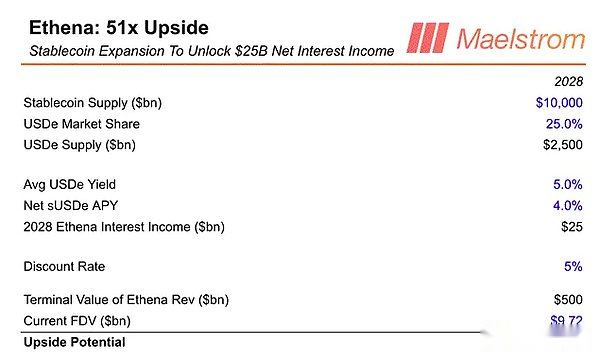
USDe Market Share: Currently, Circle’s USDC accounts for 25% of the market share of the total circulating stablecoins.I believe Ethena will surpass Circle, and over time we see marginally that USDC will lose deposits as USDe gets deposits.So my long-term assumption is that USDe gets 25% of the market share, right after Tether’s USDT.
Average USDe rate of return (Avg USDe Yield): Given that USDe supply is $2.5 trillion in the long-term scenario I predict, this will put downward pressure on the basis spread between derivatives and spot.As Hyperliquid becomes the largest derivatives exchange, they will lower neutral interest rates to increase demand for leverage.This also means that open contracts (OIs) in the crypto derivatives market will grow significantly.It would be reasonable if millions of DeFi users still have trillions of dollars in stablecoin deposits available, they could push open contracts up to trillions of dollars.
I believeENA can rise 51 times from current levels.
Since civilians can earn more interest income, how do they get rid of poverty caused by inflation through transactions?
Trading stablecoins
The most harmful effect of global currency depreciation is that it forces everyone, if they don’t already have a large amount of financial assets, to become speculators to maintain their living standards.As more people in the world suffer from wanton fiat depreciation now save on-chain through stablecoins, they will trade the only asset class that will allow them to get out of their inevitable poverty through speculation.The preferred on-chain trading venue currently is Hyperliquid (Token: HYPE), which has 67% of the DEX market share.Hyperliquid is so transformative that it is rapidly fighting CEX growth like Binance.By the end of this cycle, Hyperliquid will be the largest cryptocurrency exchange of any kind, and Jeff Yan (founder of Hyperliquid) may be richer than Binance founder and former CEO CZ.The old king is dead.Long live the new king!

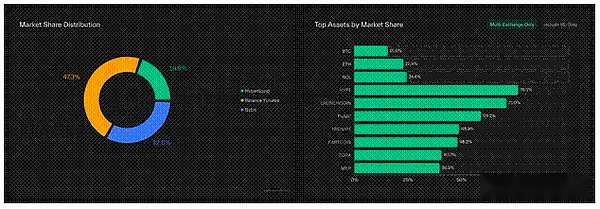
The theory that DEX will swallow all other types of exchanges is not new.What’s new in the Hyperliquid case is the team’s execution capabilities.Jeff Yan builds a team of about ten people that delivers better products faster than any other centralized or decentralized team in the field.
The best way to understand Hyperliquid is to think of it as a decentralized version of Binance.Because Tether and other stablecoins mainly power Binance’s banking channel, we can see Binance as the predecessor of Hyperliquid.Hyperliquid also relies entirely on stablecoin infrastructure to acquire deposits, but it is an on-chain trading experience.With the introduction of HIP-3, Hyperliquid is rapidly transforming into a permissionless derivative and spot giant.Any application that wants a liquidity central limit order book with real-time margin calculations can integrate any derivatives market they want through the HIP-3 infrastructure.
My prediction is that by the end of this cycle, Hyperliquid will be the largest cryptocurrency exchange of any kind, and the growth of stablecoin circulation to $10 trillion will super boost that growth.Taking Binance as an example, we can predict the average daily trading volume (ADV) of Hyperliquid at a given stablecoin supply level.
Currently, Binance’s perpetual contract average daily trading volume is US$73 billion, and the total supply of stablecoins is US$277 billion; the ratio is 26.4%.You will see this in the model as Hyperliquid ADV Share.
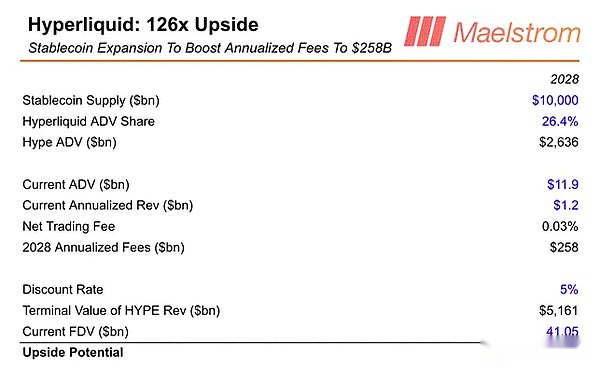
I believeHYPE can rise 126 times from current levels.
Finally, I want to talk about my most excited junk coin stablecoin project as it will be on a token offering soon.
Staking stablecoins
Since millions or even one billion people use stablecoins, how will non-crypto businesses take advantage of this new form of payment?Most businesses in the world have payment problems.They are overcharged by payment processors and many times banks are reluctant to deal with them at all.But with stablecoins in the hands of more users, companies can free themselves from the control of greedy traditional financial institutions.While this is a great wish, businesses need an easy-to-implement technology stack that enables them to accept stablecoin payments, pay suppliers and taxes in local currency, and properly account for cash flow.
Codex is a dedicated blockchain project launched for stablecoins.They are not currently issuers, but provide the ability of enterprises to handle stablecoins, stablecoins and fiat currency payments.Remember Fernando and his click farm.He needs to pay pesos to some of his employees to their local bank accounts.Using Codex, Fernando can receive stablecoins from customers and convert some of the stablecoins into pesos to deposit directly into local bank accounts.Codex has launched this feature and achieved $100 million in trading volume in the first month.
I’m so excited about Codex with the reason I go to intermediary of traditional finance global transaction banking.Yes, this is a huge total potential market (TAM), but the more transformative, currently untouched business is to provide credit to small and medium-sized enterprises (SMEs) that were otherwise unable to obtain working capital financing.Today, Codex only provides less than a day of credit to the safest payment service providers (PSPs) and fintech companies, but tomorrow, Codex can provide longer-term loans to SMEs.If a small and medium-sized enterprise operates entirely on-chain and uses Codex to make stablecoin payments, it can implement triple-entry bookkeeping.
The improvement of the three-type bookkeeping method over the double bookkeeping method is that since all income and expenditure transactions are on the chain, Codex can calculate the statement of net income and cash flow for small and medium-sized enterprises in real time, using non-forgeable data.Based on these non-forgery data, Codex can confidently provide loans to small and medium-sized enterprises, believing that the fundamentals of the enterprise will enable them to repay the principal and interest of the loan on time.Currently, in most developing countries, and to some extent in developed countries, SMEs find it difficult or impossible to obtain bank loans.Banks are understandably reluctant to take risks because they are worried that the retrospective accounting data they receive is fake.Therefore, banks only lend to large corporations or politically related elites.
As I envisioned, Codex will lend to SMEs by using stablecoin infrastructure, first becoming the largest and most influential financial institution to the global South, and then developed countries other than the United States.Codex Will Be Really Be the First Real Crypto Bank.
Codex is still in its infancy, but if the founders succeed, they will make their users and token holders super rich.Before Maelstrom took on this advisory role, I made sure the founder was ready to pursue a tokenomics strategy similar to Hyperliquid.From day one, the earned income will be returned to the token holders.They may make a round of financing.But I want to make sure the world knows that there is already an actual stablecoin infrastructure project that is dealing with real transaction volume today and that the token generation event (TGE) is about to be done.It’s time to board a super-light speed (FTL) spacecraft.
Besent’s control
To what extent Bescent will intimidate Euro-dollar and non-dollar bank depositors around the world, it depends on the spending trajectory of the U.S. government.I believe with confidence that Becente’s boss, U.S. President Trump, has no intention of balancing the budget, tax cuts or spending cuts.I know that because Trump warned his Reds Republican colleagues to be too addicted to cutting spending.He quipped more or less that they would win the 2026 election.Trump has no other ideology than winning.And in a late capitalist democratic republic, political winners would distribute benefits in exchange for votes.Therefore, Becent will run rampantly without Officer Starling (the heroine in “The Silence of the Lambs”) around to stop him.
As the government deficit continues to expand and the decline of U.S. hegemony, at least a substantial increase is required to increase tax revenues will become unfeasible.So Becente will tuck more and more debts into the market’s throat.However, when the clear policy of the person in charge is to weaken a currency, the market does not want to hold debts denominated in that currency.therefore,Using stablecoins as a Treasury bond absorber, it is time to apply the dollar to the skin (referring to the dollarization), otherwise you will be punished again.
Becente will wield his sanctions stick extensively and violently to ensure that the stablecoins pegged to the dollar will bring back the capital in segregated Euro dollar and non-U.S. retail bank deposits.He will commission Tech Bros like Zuckerberg and Musk to spread the gospel to uncivilized barbaric tribes in the distance.And these brother oligarchs will be happy to wear the national flag and push stablecoins pegged to their non-US users, regardless of whether local regulators like it, because they are Patriots (PATRIOTS)!
If I’m right, we’ll see headlines about these topics:
1. The necessity of regulating the offshore dollar market (i.e. Euro dollar)
2. Linking the use of central bank dollar swaps from the Federal Reserve and/or the Treasury Department to certain aspects of opening up digital markets to US technology companies.
3. Regulations requiring stablecoin issuers to deposit US dollars in U.S. banks and/or hold Treasury bonds.·
4. Encourage stablecoin issuers to list on the U.S. stock market
5. Big American tech companies add crypto wallets to their social media apps
6. Trump administration members make universally positive statements on the use of stablecoins
Maelstrom will continue to be very optimistic about the stablecoin verticals because of its positions in ENA, ETHFI and HYPE.We always look to the future; therefore, you will hear more about Codex because I believe it will be the protagonist of the stablecoin infrastructure.
I handed over that dollar lotion (referring to stablecoin inflows), and I was a little dry (referring to the need for capital inflows).

